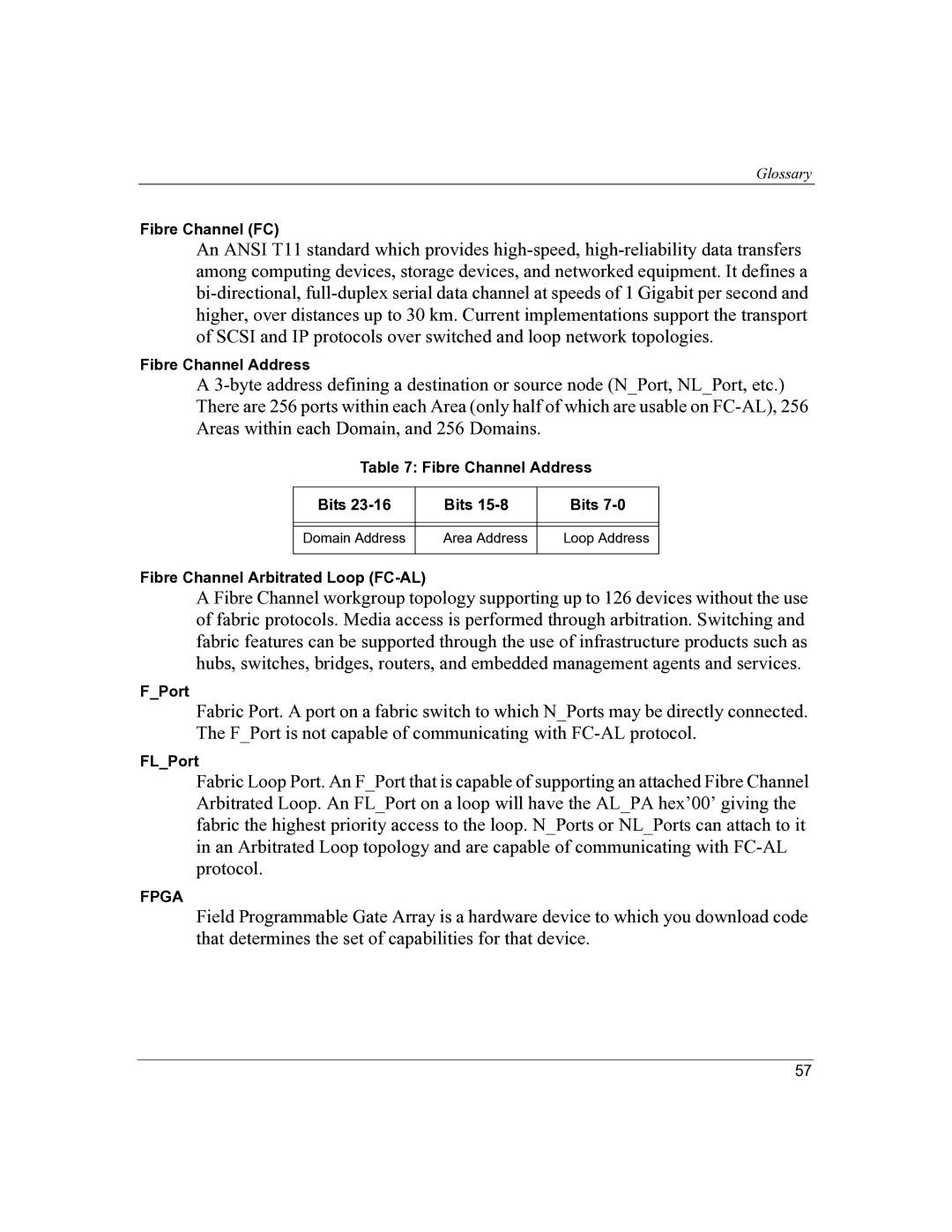
Glossary
Fibre Channel (FC)
An ANSI T11 standard which provides
Fibre Channel Address
A
Table 7: Fibre Channel Address
Bits | Bits | Bits |
|
|
|
|
|
|
Domain Address | Area Address | Loop Address |
|
|
|
Fibre Channel Arbitrated Loop
A Fibre Channel workgroup topology supporting up to 126 devices without the use of fabric protocols. Media access is performed through arbitration. Switching and fabric features can be supported through the use of infrastructure products such as hubs, switches, bridges, routers, and embedded management agents and services.
F_Port
Fabric Port. A port on a fabric switch to which N_Ports may be directly connected. The F_Port is not capable of communicating with
FL_Port
Fabric Loop Port. An F_Port that is capable of supporting an attached Fibre Channel Arbitrated Loop. An FL_Port on a loop will have the AL_PA hex’00’ giving the fabric the highest priority access to the loop. N_Ports or NL_Ports can attach to it in an Arbitrated Loop topology and are capable of communicating with
FPGA
Field Programmable Gate Array is a hardware device to which you download code that determines the set of capabilities for that device.
57
